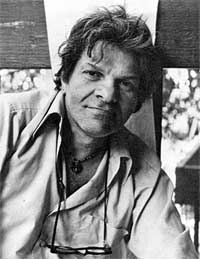
Jazz Poems
FOR MILES
Your sound is faultless
pure & round
holy
almost profound
Your sound is your sound
true & from within
a confession
soulful & lovely
Poet whose sound is played
lost or recorded
but heard
can you recall that 54 night at the Open Door
when you & bird
wailed five in the morning some wondrous
yet unimaginable score?
GREG CORSO
from Jazz Poems ~ Selected and Edited by Kevin Young
More Posts: book,classic,collectible,history,jazz,library,poet
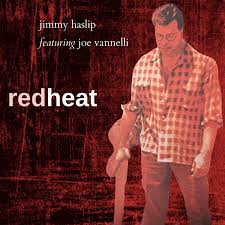
Daily Dose Of Jazz…
James Robert Haslip was born December 31, 1951 in the Bronx, New York City to Puerto Rican immigrants. Spanish was his first language but he learned to speak English in kindergarten. Moving to Huntington, New York when he was four years old, by age seven he was playing drums then trumpet and tuba until landing on the bass at 15.
Surrounded in the home with music that included classic and orchestra jazz, Latin, and pop vocals, he and his peers also visited nightclubs and concert venues. Jimmy took music lessons and attended a private music school, but considers himself self-taught. He went to a local music shop with his father, purchased a right-handed bass though he is left-handed, and learned to play it upside down without restringing.
During his high school years Haslip formed his first band called Soul Mine with his classmates, playing soul music at school dances and parties. The early 1970s saw him playing with New York glam band Street Punk, then moved to Los Angeles, California in 1976, where he played with guitarists Tommy Bolin and Harvey Mande.
A founding member of the jazz fusion group Yellowjackets in 1977, a relationship that lasted until 2012, he has also worked with Jeff Lorber, Eric Marienthal, Bruce Hornsby, Rita Coolidge, Gino Vannelli, Kiss, Tommy Bolin, Allan Holdsworth, Marilyn Scott, Chaka Khan, Al Jarreau, Donald Fagen, and Anita Baker.
Bassist Jimmy Haslip is currently taking a break from performance to concentrate on family and producing independent projects.
More Posts: bandleader,bass,history,instrumental,jazz,music
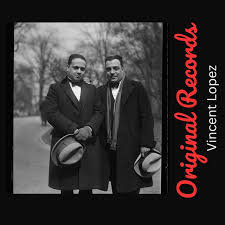
Daily Dose Of Jazz…
Vincent Lopez was born of Portuguese immigrant parents in Brooklyn, New York City on December 30, 1895. By 1916 he was leading his own dance band in New York City. Five years later his band began broadcasting on the new medium of entertainment radio, giving listeners a weekly 90-minute show on Newark, New Jersey station WJZ. The broadcast was instrumental in making him one of North America’s most popular bandleaders through the 1940s.
In the 1930s and ‘40s Vincent worked occasionally in feature films, notably The Big Broadcast and I Don’t Want to Make History and was one of the first bandleaders to work in Soundies movie musicals. His flamboyant style of piano playing influenced Eddy Duchin and Liberace.
Noted musicians who played in his band included Artie Shaw, Xavier Cugat, Jimmy Dorsey, Tommy Dorsey, Bob Effros, Mike Mosiello, Fred Lowery, Joe Tarto and Glenn Miller. He featured singers Keller Sisters and Lynch, Betty Hutton, and Marion Hutton. Lopez’s longtime drummer was Mike Riley, who popularized the novelty hit The Music Goes Round and Round.
In 1941, Lopez’s Orchestra began a residency at Manhattan’s Taft Hotel that lasted 25 years. In the early 1950s, he along with Gloria Parker hosted a radio program broadcast from the Taft Hotel called Shake the Maracas in which audience members competed for small prizes by playing maracas with the orchestra.
Bandleader, pianist and actor Vincent Lopez, who published his autobiography Lopez Speaking in 1960, died at the Villa Maria nursing home in North Miami, Florida on September 20, 1975.
More Posts: bandleader,history,instrumental,jazz,music,piano
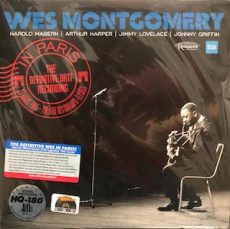
Requisites
Wes Montgomery in Paris: The Definitive ORTF Recording ~ Wes Montgomery | By Eddie Carter
Up next from the library is a live date by Wes Montgomery from 1965, previously available only on various labels and several bootleg copies. It finally received its first official release in 2017. Wes Montgomery in Paris: The Definitive ORTF Recording (Resonance Records HLP-9032) is a two-record set recorded during the guitarist’s only trip to the city during his European tour in conjunction with Ina France. This trip was a significant moment in Montgomery’s career, allowing him to showcase his talent to new audiences and reunite with Johnny Griffin (tracks: C1, C2, D1) on tenor sax. Harold Mabern on piano, Arthur Harper on bass, and Jimmy Lovelace on drums complete the ensemble. My copy is number 1085 of the 2017 U.S. Limited Edition Record Store Day Mono Audiophile album.
The quartet begins the set with Wes Montgomery’s Four-on-Six. They lay an impressive blueprint in a lively melody, and Wes gets down to business in a dazzling opening statement. Harold meets the challenge with an aggressive interpretation preceding the group’s return to the reprise and close. Impressions by John Coltrane takes the foursome into the stratosphere during the speedy melody. Wes launches into an extended opening statement that races rapidly before Harold takes over for a furiously swinging interpretation, while Arthur and Jimmy keep it moving into the theme’s restatement and climax.
The tempo comes down for The Girl Next Door, a pretty ballad by Hugh Martin and Ralph Blane. Wes’s unaccompanied introduction is as warm as a soft summer breeze, leading to the quartet’s lovely theme. The rhythm section lays a lush accompaniment for the guitarist’s sultry solo showcase, which will touch your heart into an enchanting ending. Here’s That Rainy Day by Jimmy Van Heusen and Johhny Burke begins the second side with a Latin-tinged introduction to the ensemble’s opening chorus. Wes takes the lead and gives an exciting solo to get the listener’s toes up and dancing. Harold continues the infectious enthusiasm in the second reading before the closing chorus.
Jingles by Wes Montgomery opens with the quartet’s spirited introduction and melody. The guitarist heads out of the gate at full speed. Harold comes right behind him to give an energetic interpretation. Wes and Jimmy get together to share a lively conversation next, and then Jimmy gets the last word before the theme returns. To Wane, Harold Mabern’s tribute to Wayne Shorter comes to life with the pianist’s lively introduction; then, the quartet sets a swinging groove on the melody. Wes is up first and works his magic on the opening statement. Harold completes the solos with a real burner, preceding the reprise and climax.
The foursome becomes a quintet with the addition of Johnny Griffin to start side three. Full House by Wes Montgomery begins with the ensemble easing the melody’s throttle. Wes kicks off the solos with bluesy lines of good-hearted swing; then, Johnny showcases his energy next in a joyous performance before the theme returns amid a thunderous ovation. ‘Round Midnight by Thelonious Monk, Bernie Hanighen and Cootie Williams begins with Harold’s tender introduction segueing into Wes’s haunting melody. Johnny begins the opening interpretation gracefully; Wes follows with a solo as enjoyable as the warmth from the fireplace before the quintet softly carries the song out.
Blue ‘N Boogie by Dizzy Gillespie and Frank Paparelli begins side four with the quintet’s brisk theme, and then Wes catapults into the first spicy performance. The highlight is when Johnny takes over for an extended solo, with an unaccompanied run into the quintet’s finale. The guitarist’s theme, West Coast Blues, follows, allowing the leader to introduce his bandmates to the crowd. The quartet returns for the set’s finale, Twisted Blues by Wes Montgomery, which the group begins slowly. Wes picks up the beat and swings effortlessly in the opening solo. Harold makes a stylish impression next, and then Arthur gets to solo last, creating an absolute jewel preceding Wes’s return for the finish.
André Francis produced the original recording, Zev Feldman produced this audiophile release, and Office de Radiodiffusion-Télévision Française (ORTF) made the original recording. George Klabin and Frank Gala restored the sound, and Bernie Grundman mastered the album. The album’s sound quality is impeccable, with an excellent soundstage that will transport the listener to the Théâtre des Champs-Élysées audience as if the performance is taking place right in front of them. The records are pressed on 180-gram vinyl and are silent until the music starts. Also included in this two-record set is an eight-page booklet with rare photos by Jean-Pierre Lenoir, essays and interviews and six collector postcards.
The 2017 audiophile album was a limited edition of three thousand, but it is one of the best releases that will reward your detective work in finding a copy. Wes Montgomery in Paris: The Definitive ORTF Recording is, in my opinion, Wes’s best live album, capturing the essence of his unique style and virtuosity. This is the most authoritative and comprehensive recording of Montgomery’s performance from the French radio and television broadcaster. It’s an outstanding record with a superb supporting cast that I’m proud to have in my jazz library. If you’re also a Wes Montgomery fan or enjoy jazz guitar, it should be seriously considered for a spot in yours!
~ Here’s That Rainy Day, ‘Round Midnight – Source: JazzStandards.com
© 2024 by Edward Thomas Carter
More Posts: choice,classic,collectible,collector,guitar,history,instrumental,jazz,music
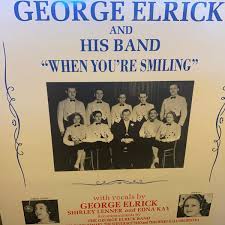
Daily Dose Of Jazz…
George Connell Elrick was born on December 29, 1903 in Aberdeen, Scotland. His first ambition was to be a doctor but financial constraints prevented this. Still in his teens, he began playing drums for local dance bands and by 1928 had formed his own band, the Embassy Band. The group swept the prizes in the All-Scottish Dance Band Championship that year.
Turning professional, George moved to London, England where he became friends with the crooner Al Bowlly, and began singing himself. He joined the Henry Hall Orchestra as a vocalist and drummer and their 1936 recording of The Music Goes Round and Round made him a star. Leaving Hall in 1937 he formed his own band, and two years later began his solo career, which was moderately successful through the years of World War II.
In 1948, he took a touring revue around Britain, and was asked by the BBC to stand in for two weeks as disc-jockey on the morning record request show Housewives’ Choice. The temporary job lasted almost twenty years, as his Scottish accent and liberal use of catchphrases became highly popular.
In later years, he became something of an impresario and acted as an agent for numerous musicians such as Mantovani. He was a member of the Grand Order of Water Rats, and was also a life member of the Variety Club of Great Britain.
Drummer George Elrick, who published his autobiography titled Housewives’ Choice: The George Elrick Story, died on December 15, 1999.
More Posts: bandleader,drums,instrumental,jazz,music,vocals




